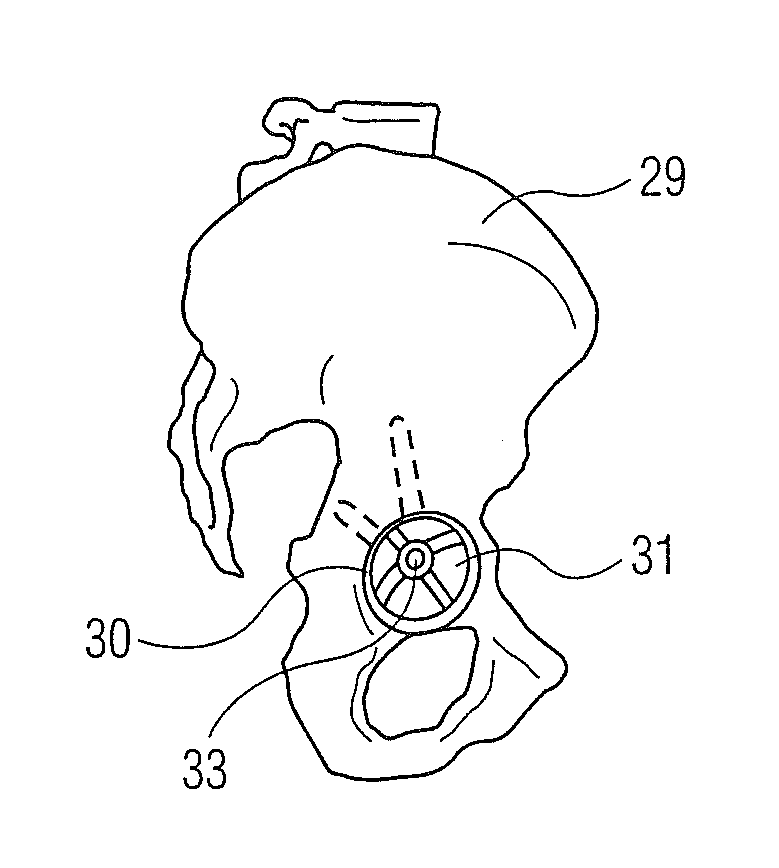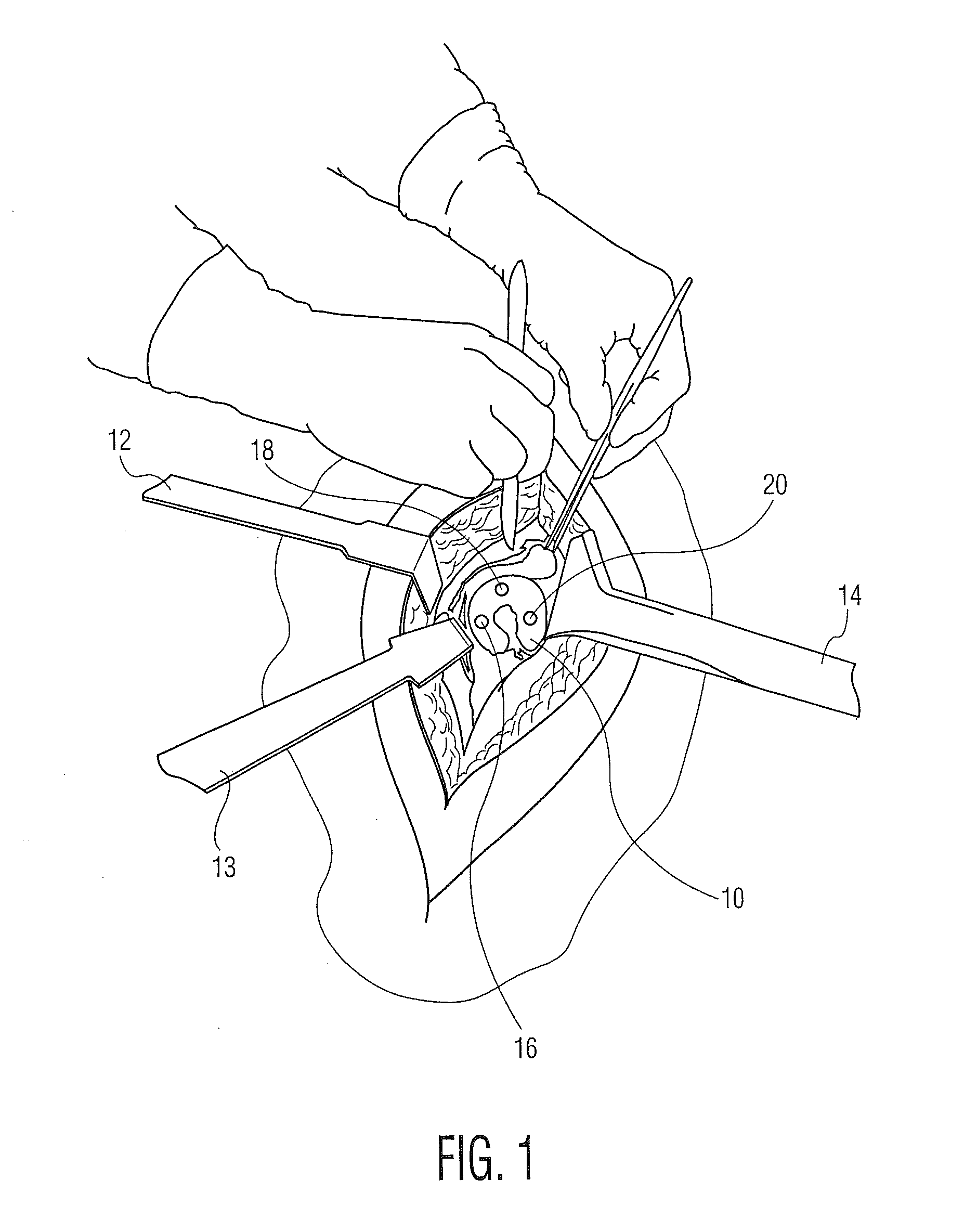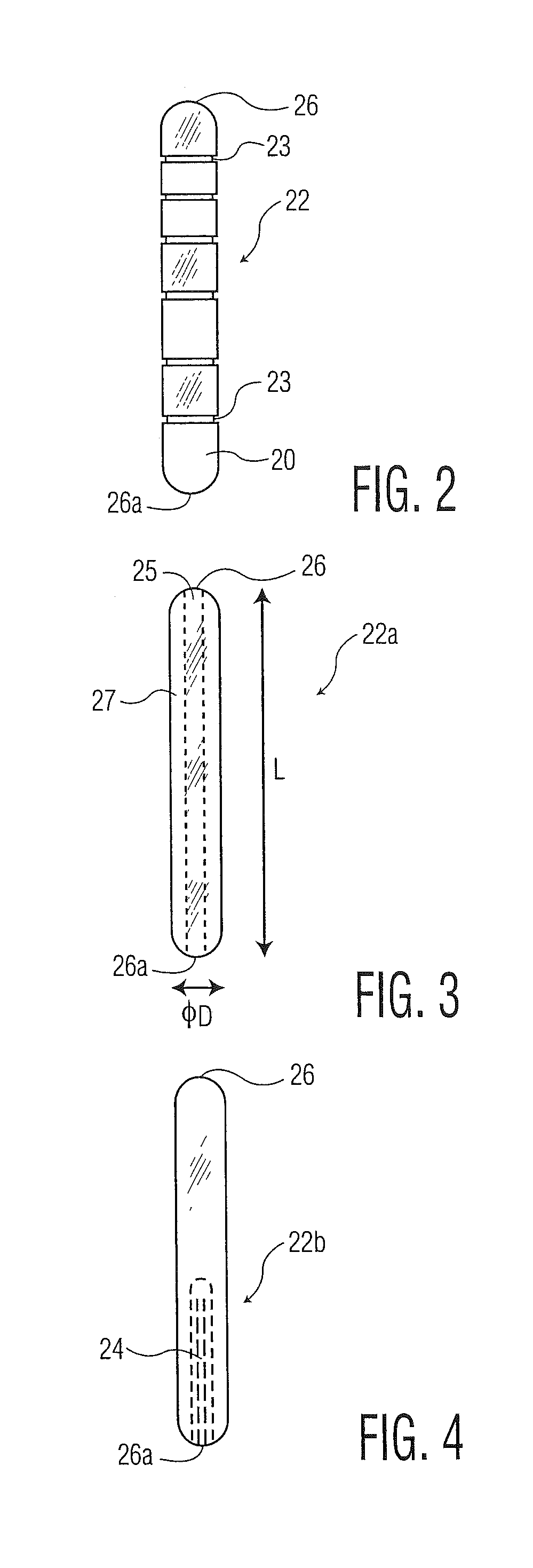Porous bone reinforcements
a technology of porous bone and reinforcement, applied in the field of porous bone reinforcement, can solve the problems of loss of bone, poor long-term outcomes for patients, limitations and problems of each of these techniques, and achieve the effect of facilitating reaming
- Summary
- Abstract
- Description
- Claims
- Application Information
AI Technical Summary
Benefits of technology
Problems solved by technology
Method used
Image
Examples
Embodiment Construction
[0032]Referring to FIG. 1 there is shown a surgeon exposing an acetabulum 10 for preparing the acetabulum to receive a typical acetabular implant (not shown). After making an incision retractors 12, 13, and 14 are utilized to keep the incision open while the surgeon prepares the acetabulum. Also indicated in FIG. 1 are three locations 16, 18 and 20 for placing the reinforcement pilings or pins of the present invention.
[0033]Referring to FIGS. 2-4 there is shown three embodiments of the reinforcement pilings or pins of the present invention generally denoted as 22, 22a and 22b respectively. Referring to FIG. 2 there is shown a piling or pin 22 made of solid metal such as titanium, stainless steel or cobalt chrome alloy for insertion into the acetabulum. The pin has a cylindrical shape with a diameter of 10 to 30 mm and a length of between 25 and 125 mm. The pin may have a series of spaced circumferential grooves 23 to provide for greater retention of the pin or piling 22 in the bone ...
PUM
 Login to View More
Login to View More Abstract
Description
Claims
Application Information
 Login to View More
Login to View More - R&D
- Intellectual Property
- Life Sciences
- Materials
- Tech Scout
- Unparalleled Data Quality
- Higher Quality Content
- 60% Fewer Hallucinations
Browse by: Latest US Patents, China's latest patents, Technical Efficacy Thesaurus, Application Domain, Technology Topic, Popular Technical Reports.
© 2025 PatSnap. All rights reserved.Legal|Privacy policy|Modern Slavery Act Transparency Statement|Sitemap|About US| Contact US: help@patsnap.com



